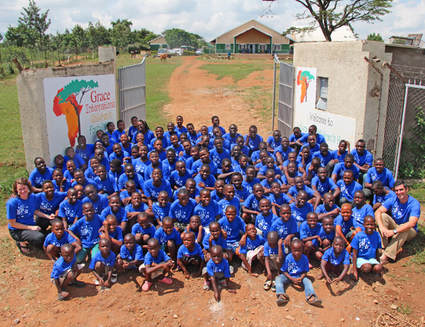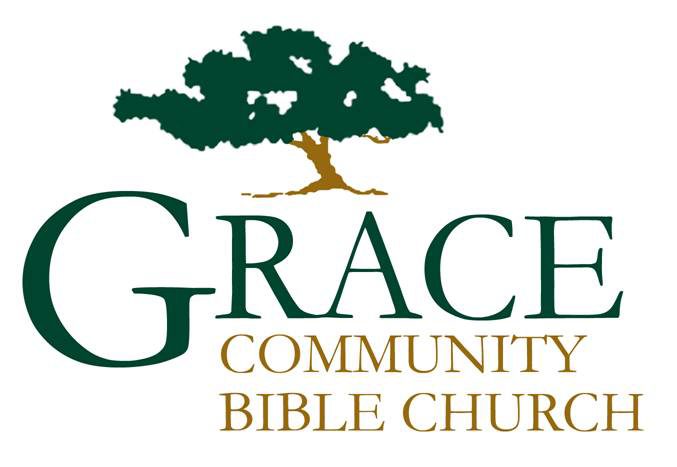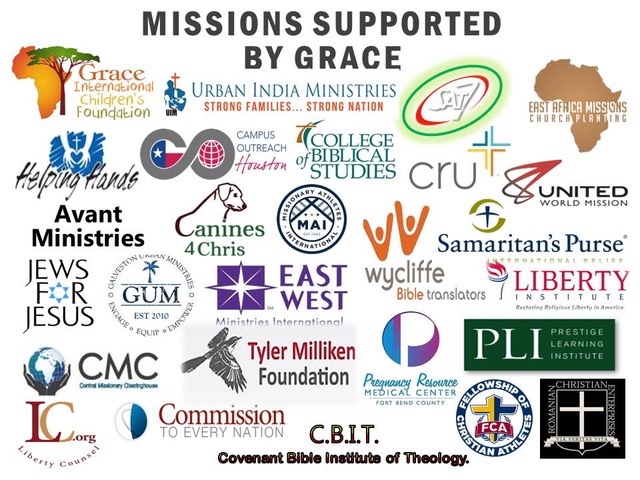LOCAL
Campus Outreach—Houston
Galveston Urban Ministries
Fellowship of Christian Athletes
Tyler Milliken Foundation
Prestige Liberty Counsel
College of Biblical Studies
REGIONAL
INTERNATIONAL
East-West Ministries
Wycliffe Bible Translators
United World Mission
Jews for Jesus
SAT-7
Covenant Bible Institute in Uganda
East Africa Missions Church Planting
GICF – Lulwanda Children’s Home In Uganda
Samaritan’s Purse
Central Missionary Clearing House
Commission To Every Nation
Urban India Ministries
Romanian Christian Enterprises
Campus Crusade International
Missionary Athletes International
Avant
Grace International Children’s Foundation (GICF)
Grace International Children’s Foundation (GICF) was started at GCBC during 2001 in response to the difficult circumstances of people, especially children, in Uganda as experienced during our church planting efforts. GICF’s primary activity is the operation of the Lulwanda Children’s Home in Mbale, Uganda. The home (orphanage) opened with 25 children in November 2004 with a grand official ceremony held in June of 2005. It has grown to currently service 125 teens and younger children (see picture below). Members at Grace are heavily involved through child sponsorships and giving for basic operations and special projects.
Covenant Bible Institute of Theology
Grace has been supporting the Covenant Bible Institute of Theology since 1999. CBIT is the primary institute that trains and supplies pastors for the church plants in Uganda, Kenya, and Tanzania sponsored by the Bible Presbyterian Church of Uganda. Grace has supported the institute through pastor sponsorships, regular giving to operating and building funds, and growing the support base. The school is managed by the local Board in Mbale, Uganda with help from the USA Board located in Houston, Texas. The school averages 30-40 students at various stages of study, typically graduating students every 2-3 years. Many of the graduates go on to pastor churches but others serve as deacons and elders across the church-plant ministry.
The school finished a new building project in 2014 adding a new library, administrative block, and classrooms (see attached picture). A new building campaign is now underway to supply CBIT with a dining hall and dormitory, two things which the National Council of Higher Education has designated as needs for the school.
More On Church Plants
One of the major missions ministry efforts at Grace revolves around the church planting efforts in East Africa. Since our first trip in 1998 Grace has partnered with the Bible Presbyterian Church of Uganda (our in-country sponsor) to plant churches in Uganda, Kenya, and Tanzania. Since that time we have planted 25 churches, trained over 250 short-term missionaries, seen thousands of people trust in Jesus Christ, and introduced many other churches to the ministry. Grace was the church that helped to open the church plant ministry efforts in Kenya in 2003 and Tanzania in 2008. A list of the churches we have helped to plant is shown further below.
Presently Grace executes a church planting trip every two years and we are always open to having first-timers join us and experience the foreign mission field first hand. The picture below is from our 2016 church plant in Tanzania, where we had the opportunity to share the gospel with several of the Maasai people in the region.
Between trips, we raise funds for upcoming church plants/mission trips through church-wide luncheons held several times during the year.
Church Plants with GCBC Participation
- 1998 – Pastor’s Conference, Exploratory Visit
- 1999 – Bulolelo, Uganda
- 2000 – Budaka & Nauyo, Uganda
- 2001 – Kanginima & Namagumba, Uganda
- 2002 – Bulucheke & Sidanyi,Uganda
- 2003 – Eldoret, Kenya (first plant) & Bubulo, Uganda
- 2004 – Siaya, Kenya & Buwabwala, Uganda
- 2005 – Sibanga, Uganda
- 2006 – Apokoro, Uganda
- 2007 – Wangale, Uganda
- 2008 – Moshi, Tanzania (first plant)
- 2009 – Komuge H.P., Uganda
- 2010 – Webuye, Kenya
- 2012 – Merikit, Uganda
- 2014 – Koena, Uganda
- 2016 – Boma Ng’ombe, Tanzania
- 2018 – Nango, Kenya
- 2022 – Oburagan, Uganda




